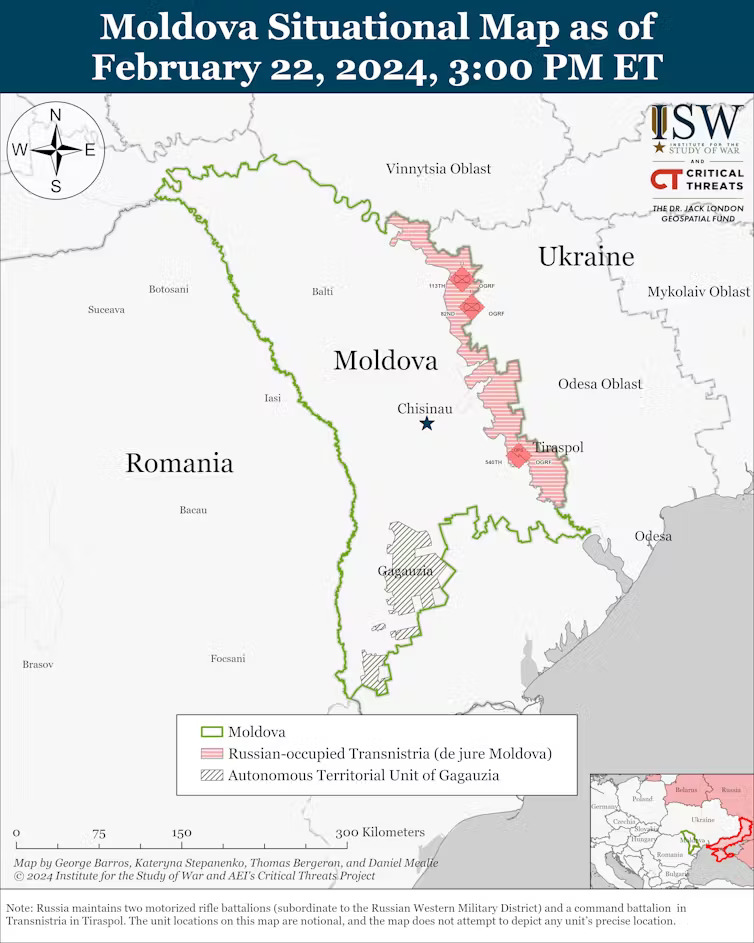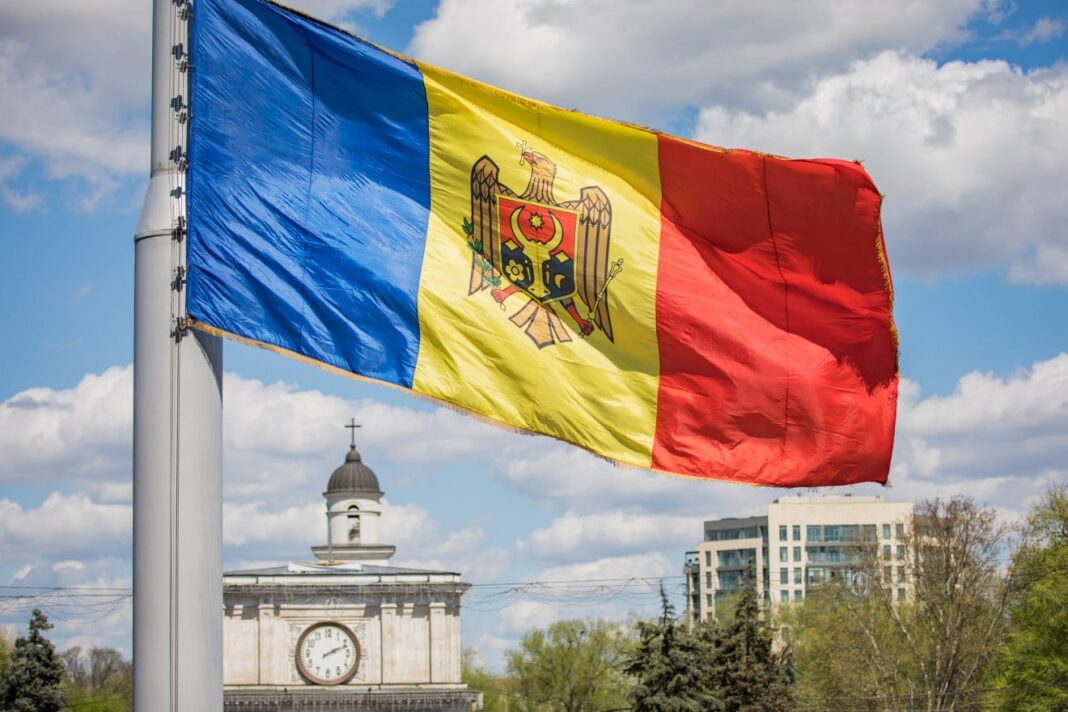Situated geographically close to Central Europe yet practically distant, the Republic of Moldova, nestled between Romania and Ukraine, presents a unique geopolitical landscape. With a population of approximately 2.6 million, this Southeastern European country is one of the continent’s least populous nations. Moldova’s history includes periods under the Russian Empire in the 19th century and later under Romania after World War I. Following the dissolution of the Soviet Union, Moldova became an independent republic, and today it remains one of Europe’s less developed countries.
In 2022, the Moldovan government estimated that 30-40% of its population favored Russia. Russian is still commonly used in daily life, and Russian troops are stationed in the breakaway region of Transnistria. Despite this, in June 2022, the European Union granted Moldova candidate status alongside Ukraine. However, Moldova continues to live in a state of uncertainty, with the looming threat of potential Russian military action always present.
Some believe that Moldova’s circumstances can only be resolved through self-reliance. The sentiment is that without NATO membership, it will be challenging to assist Moldova if Russia attacks. Mircea Geoană, NATO’s Deputy Secretary General and a former Romanian politician and foreign minister, has explicitly ruled out NATO intervention. Geoană asserts that Moldova has realized that neutrality does not necessitate military weakness. He believes that Russia currently lacks the military capability to intervene in Transnistria without first occupying Ukraine to establish bases there. A more concerning aspect of the Russian Ministry of Defense’s statements is the treatment of Transnistria, part of Moldova, as if it were a region of Russia.
It remains unclear how Moldova can be defended. It is assumed that the United States has plans for this scenario, and Romania is likely involved. Since the 2004 Istanbul Summit, NATO has tasked Romania with handling matters related to Moldova and Transnistria, maintaining a presence in this border region for over 30 years.
Moldova seeks to remain militarily neutral and aspires to join the European Union. Discussions about NATO membership have resurfaced recently, but this is currently on hold due to Russia and the ongoing war in Ukraine. Romania supports Moldova’s EU membership, with Prime Minister Marcel Ciolacu suggesting it could resolve long-standing issues, such as the idea of Moldova uniting with Romania. However, only a few extremist politicians support the union nowadays.
Romania has enacted legislation to protect the more than 600,000 Moldovans who also hold Romanian citizenship, giving the president the authority to respond if these dual citizens face threats from Russia. A more immediate concern is the situation in Gagauzia, reminiscent of the 1990s conflict in Transnistria. Gagauzia, an autonomous region in southern Moldova bordering Ukraine, with its capital in Comrat, has seen developments that experts believe follow a separatist playbook similar to that in Transnistria and Ukraine.

A map of the Moldavian conflic hotspots
Local Gagauz leaders, led by Ilan Şor, are attempting to reduce Comrat’s dependency on Chisinau and align more closely with Russia. This includes measures like exporting agricultural products to Russia, adopting the Russian “Mir” payment system, and offering lower gas prices exclusively to Gagauzia’s residents. Russian President Vladimir Putin’s promises of protection and frequent visits to Moscow further hint at a separatist agenda. These actions mirror past separatist movements in Transnistria, which escalated into conflict and hybrid warfare.
Contrastingly, President Maia Sandu and the Chisinau government pursue policies of inclusion and national emancipation to meet Gagauzia’s needs, strengthening Gagauz identity within the Moldovan state. Efforts focus on promoting the Gagauz language and culture while avoiding Russification and supporting harmonious integration into Moldova. Sandu’s repeated visits to the region signify attempts to bolster relations between the government and Gagauzia’s residents, despite disinformation campaigns from the Russian-backed Şor group portraying defiance against central authority.
Russian media is also fomenting fear in Gagauzia, especially concerning potential union with Romania. Gagauz leader Guțul has adeptly used disinformation, threatening violent responses reminiscent of the Transnistrian conflict, reinforcing separatist sentiment and division within Moldova.
Economic and political maneuvers by local pro-Russian actors conflict with Chisinau’s pro-European policies, emphasizing internal divisions and complicating Moldova’s EU integration prospects. Unlike Transnistria, which has sought to boost its economy through trade with the EU, Gagauzia remains verbally aligned with Russia. Recent Russian moves to permit Gagauz agricultural imports signal a strategy to solidify independent economic ties between Gagauzia and Russia.
The recent strategy under Evghenia Guțul’s leadership is likely to hinder Moldova’s European integration efforts, with active economic and political separatism potentially delaying or blocking EU accession processes, given the EU’s stringent requirements for political stability and territorial integrity in candidate states.
Gagauzia’s predominantly Russian-speaking population has always been a hotbed of Russian influence in Moldova. Although autonomous since 1994, recent Russian actions suggest attempts to transform this region into a new Transnistria, not only politically and socially but economically independent from Moldova. Early in Moldova’s independence, separatist-leaning politicians frequently visited Moscow for directives to destabilize the already fragile democracy.
Russia’s strategy also includes supporting pro-Russian parties and politicians in the region through direct financing or misleading campaigns, ensuring these leaders either remain in power or wield significant influence. This mirrors the model used in Transnistria, where Moscow consistently supported the separatist regime. This topic was discussed at a recent reintegration forum, which saw participation from over a hundred officials, local, and European experts, proving to be a productive initiative for addressing the Transnistrian issue.
Russia appears to be exploiting and exacerbating Moldova’s internal ethnic and political tensions, using Gagauzia as an example of a region that could purportedly enjoy greater protection under Russian influence than under Moldova’s pro-European government. Repeating the Transnistrian scenario in Gagauzia would have severe implications for Moldova’s political stability. Continuous dialogue, support for regional development, and European integration are crucial to counter Russian influence and ensure stability for Gagauzia’s residents.

